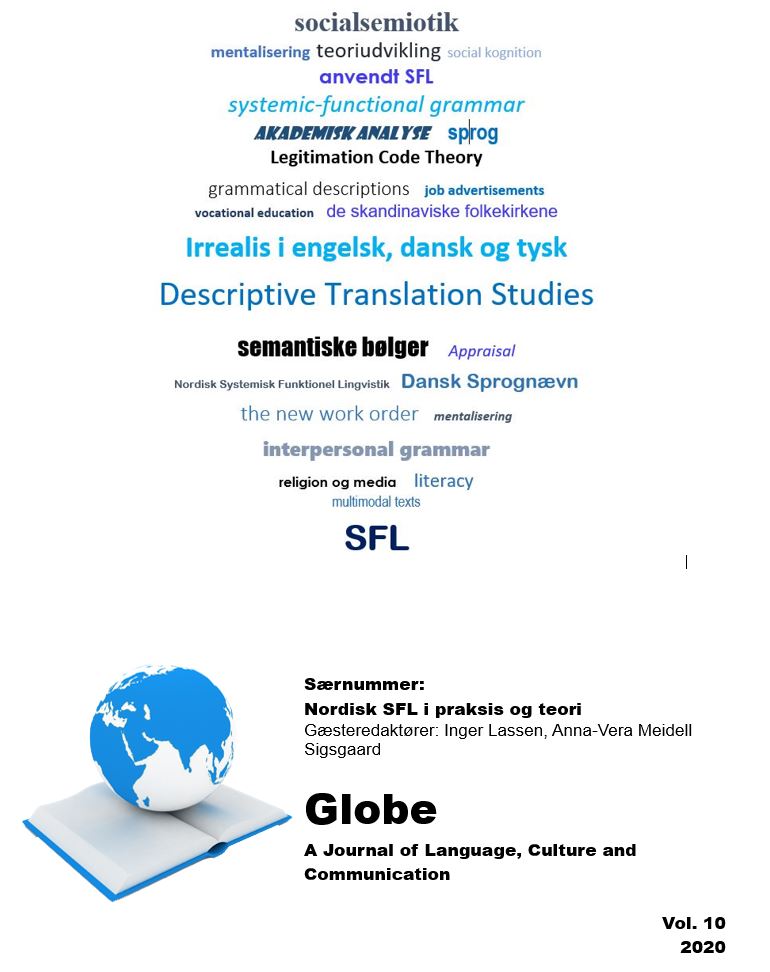Using SFL as a powerful tool for analyzing multimodal texts from vocational education
DOI:
https://doi.org/10.5278/ojs.globe.v10i.5879Resumen
Young students in the vocational education and training (VET) programs in Denmark often struggle with reading and writing and face multifarious literacy challenges. At the same time, the texts from these education programs are often challenging and different from the school texts students know from their primary education with regard to multimodality. To highlight these challenges, better ways of analyzing the texts used in the vocational programs are needed, along with, in the long term, the development of more effective instructions for the students of these programs. Systemic Functional Linguistics (SFL) is a complex linguistic theory that offers immense potential for analyzing the details in texts. Using Martin and Rose’s (2011) model and focusing on information distribution, the logico-semantic relation, boundaries, and identification, this article analyzes a multimodal text from a vocational education program to demonstrate its complexity. Furthermore, the challenges this complexity presents to poor readers’ understanding of the different elements of the text, the role these elements play, and the sender-receiver relationship are demonstrated. The following discussion of the use of this complex theory as a basis for teaching literacy strategies to students in either primary education or vocational training programs will be of interest to literacy researchers in other countries as well.
Descargas
Publicado
Número
Sección
Licencia
Articles published in Globe: A Journal of Language, Culture and Communication are following the license Creative Commons Attribution-NonCommercial-NoDerivs 3.0 Unported (CC BY-NC-ND 3.0). Authors retain copyright and grant the journal right of first publication with the work simultaneously licensed under a Creative Commons Attribution License: Attribution - NonCommercial - NoDerivs (by-nc-nd). Further information about Creative Commons


